FAB Market Insights
Stay informed with our art news and market insights.
Buying art online is becoming increasingly popular, and not just because of Covid-related travel restrictions. In 2020 aggregate online sales for auctions reached a record high of $12.4 billion, while the share of online sales for dealers rose from 13% in 2019 to 39% in 2020. In March 2021 Beeple’s Everydays sold at Christie’s for $69 million, setting a new world record for the most expensive work of art sold online.
As galleries, artists, art fairs and auctions look to increase their digital sales activity, it’s more important than ever to know how to judge value, condition and authenticity remotely. Fine Art Brokers recommends that both new and experienced collectors take the time to research the main factors at play when considering important purchases online.
Following on from our recent webinar on the topic, here are our top tips for buying art online with confidence.
Develop your eye
While attending exhibitions, art fairs and auction previews remains a good way of developing your eye and discovering new artists, the sky’s the limit when it comes to digital resources. ‘It can be daunting to know where to start online,’ says Ray Waterhouse, co-founder of Fine Art Brokers. ‘If you want to collect Contemporary art, I’d recommend trying to find a dealer or gallery you respect with exhibition programmes which suit your taste. You’ll soon find yourself on a trail of an artist that you love.’ You should also check out artists’ training, awards, exhibitions and whether their work can be found in notable private or public collections. ‘This will help you determine whether the artist’s work might prove a savvy investment,’ he adds.
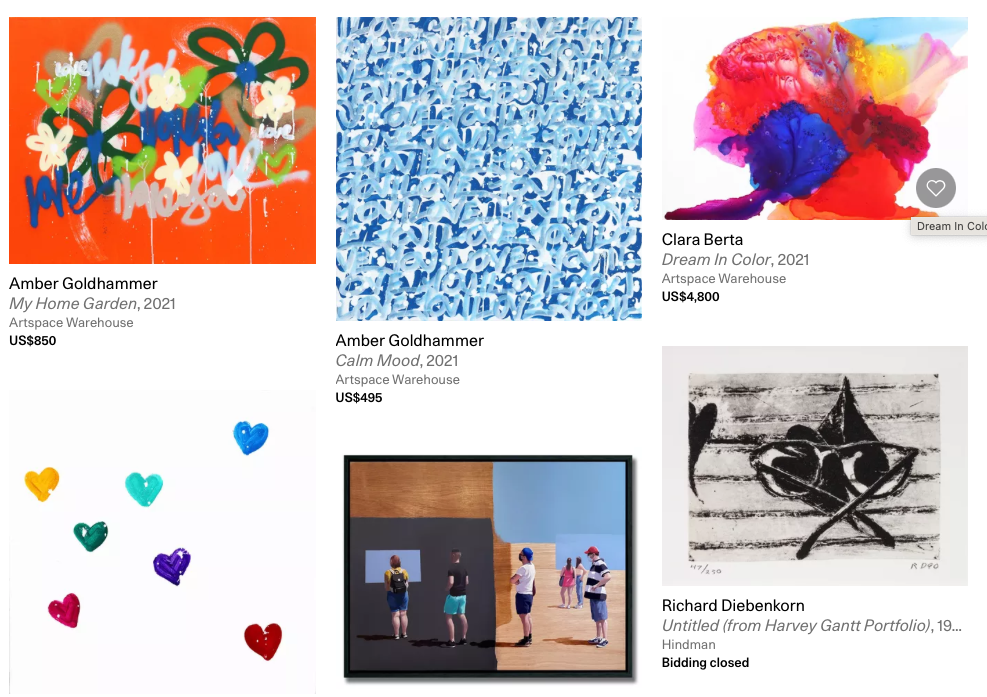
‘Lots of options but what to choose?’
For the secondary market, it’s important to first identify the period and style of art you like – Impressionism, Surrealism, Post-War, Abstract or Figurative, for example – then find dealers or auction houses which specialize in the field. ‘I’d recommend developing relationships with one or more art market insiders, as they can provide guidance and tips. Unlike lawyers, art dealers and auctioneers provide a lot of free advice,’ says Waterhouse.
Browsing video, web and social content is another way of developing your eye, educating yourself about what’s available and discovering new talent. It’s also a good means of engaging with the story of an artwork or artist and learning more about the work’s condition and technical quality. Online auction catalogues, for example, now include comprehensive condition reports and lot details, while 3D platforms such as Matterport can help you visualise the work in space. Charity auctions, satellite fairs and MFA showings have also built out their digital platforms to help buyers navigate their extensive offerings.
Ask for advice
If you find the endless choices online somewhat overwhelming, however, look to enlist an advisor and might be able to learn a tip on how to buy art online. ‘When I first started out in this business, auction catalogues were printed in black and white,’ recalls Waterhouse. ‘There were no fairs and there was no internet, so people bought from their local gallery. But now the whole world is your gallery. As an advisor, I can help clients negotiate the myriad of artworks available online and offer advice on everything from the medium and the artist’s market, to when to buy and when to sell.’

Ray Waterhouse, co-founder of Fine Art Brokers.
The good news is that art advisors can be less expensive yet more valuable than you might think. ‘Initially, we offer complimentary consultations to gauge a client’s taste and help guide them on a path of discovery,’ says Waterhouse. ‘We can then make recommendations, provide market reports and help negotiate purchases. And we only charge fees if a deal is completed.’
It’s also worth remembering that good art advisors, as well as auction experts and gallerists, are involved in the market constantly, so they should be aware of trends and buying opportunities that many collectors aren’t aware of.
Verify the seller’s legitimacy
‘The main aspect to establish when buying art online is trust,’ says Waterhouse. ‘See if the seller (a dealer or a gallery) is part of an association or if they exhibit at established and respected fairs.’ Exhibitors participating in fairs with Online Viewing Rooms such as Art Basel, Masterpiece Online, TEFAF Online or Frieze London are verified by an independent vetting committee, giving an extra layer of confidence to buyers. You should also see if they have a website, active social media accounts and reputed payment gateways. Once you’ve done your due diligence, start a conversation.
‘We all love being asked valuable questions,’ says Waterhouse. ‘Start by asking about the artist, the artist’s market, the condition of the work, its provenance and the quality of the frame. You’ll also want to find out the work’s main characteristics such as size, technique and whether it’s a print or a unique work.’
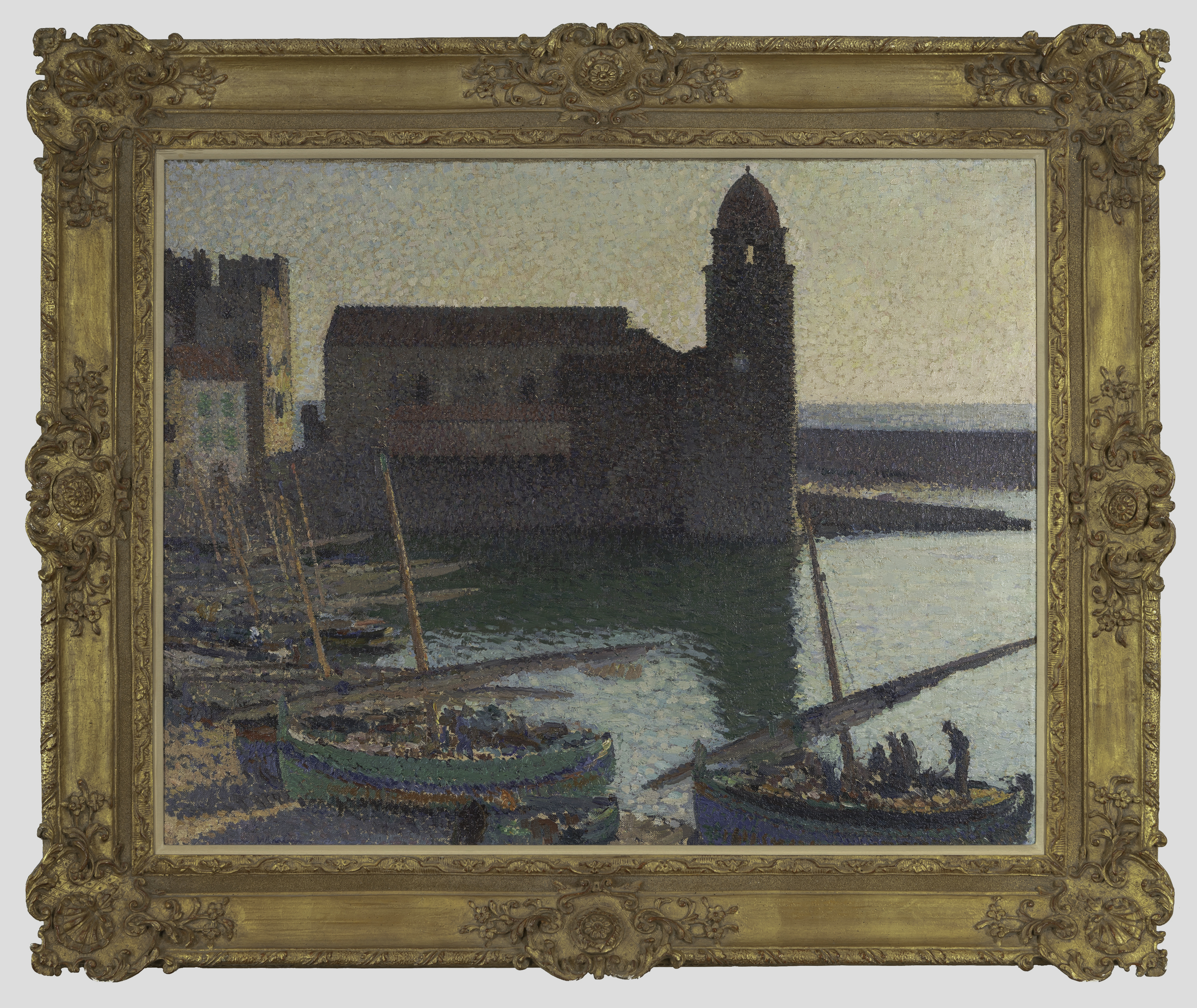
Henri Jean Guillaume Martin (French 1860-1943), Le port de Collioure. 30 x 38 inches / 76 x 97 cm. Courtesy of Fine Art Brokers.
Requesting lots of different images of the artwork — including the front, the back and any labels — is recommended. ‘The details found on the verso can indicate provenance and exhibition history,’ says Waterhouse. ‘Thanks to the internet, it’s become much easier to research these labels.’
Waterhouse also recommends asking about the guarantee policy, as this varies from country to country and seller to seller, import taxes, insurance and shipping. Building a comprehensive dossier around the gallery, artist and artwork will develop your expertise and understanding of what further questions you may need to ask.
Set a budget
With competitive pricing and instant purchase options, buying art online is getting easier and easier. So it’s a good idea to set a budget and stick to it. Helpfully, you can now filter artworks by price, as well as by medium, date and artist on many e-commerce platforms including Artsy. For Waterhouse, it’s quality over quantity every time. ‘Buy fewer but better works,’ he says. ‘If your budget is $20,000 for three pieces, for instance, consider buying a more important piece for $15,000 and spending the remainder on two prints rather than spreading the budget equally.’
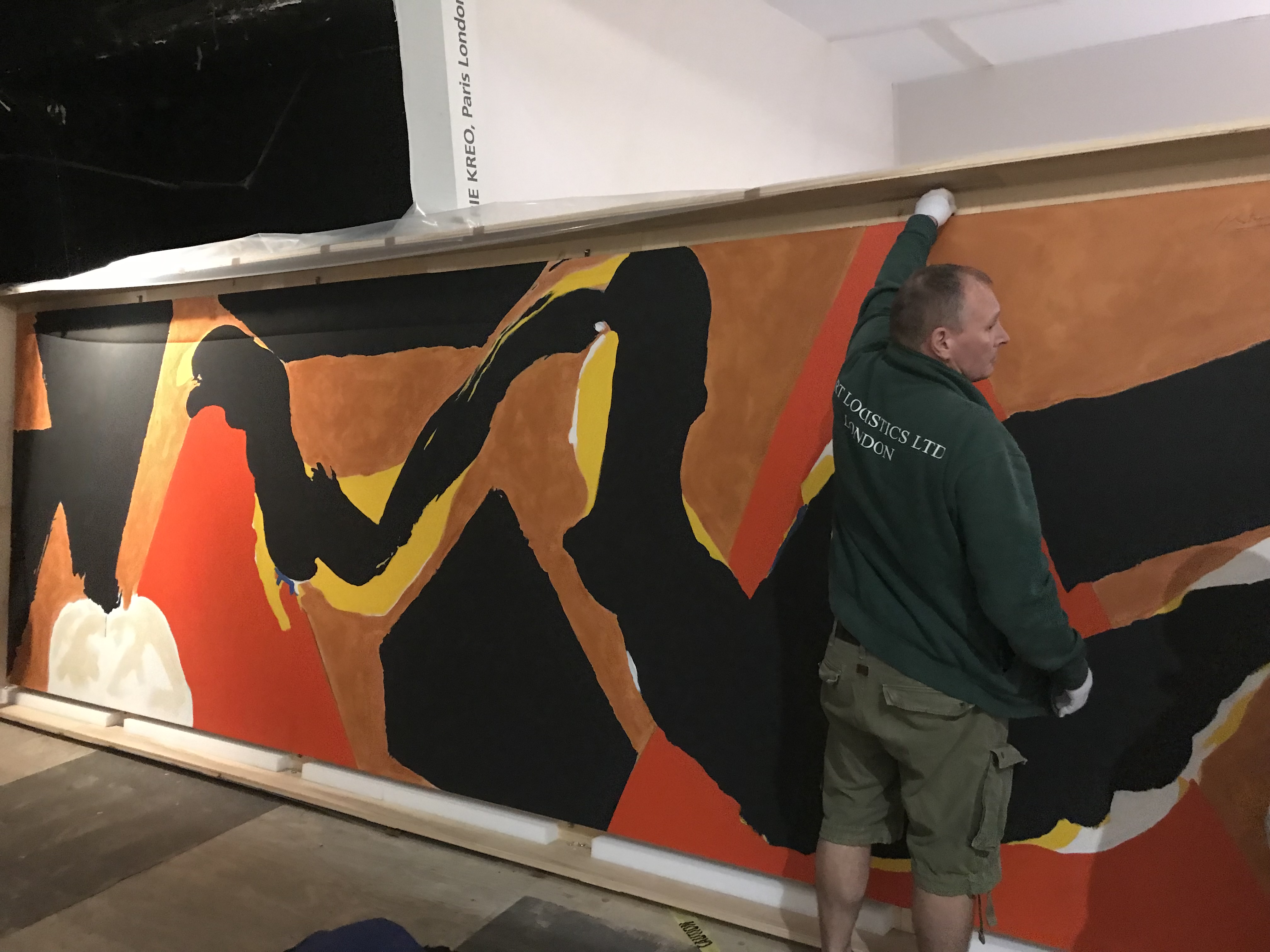
Bourlet Art Logistics crating a work for shipping.
When drawing up your budget, make sure to factor in other financial costs such as shipping, import tax and insurance. ‘You don’t want to be hit with an unexpected bill once you’ve paid for your artwork,’ adds Waterhouse.
Check the condition
Evaluating the condition of an artwork is an integral part of the sales process. This is more difficult to do online, so request a condition report from the dealer or auction house. These reports can be sent via email and will usually include an overall assessment of the work and any expected conditions that are age or process related such as craquelure on an Old Masters painting or a footprint on a Basquiat. They will also include any damages caused by mishandling or carelessness and recommendations for what can and should be repaired.
‘If you’re considering an important purchase online, I’d always advise employing an independent conservator,’ notes Waterhouse. ‘You want someone who is versed in the market and knows how the work you are buying compares to other recently sold works.’
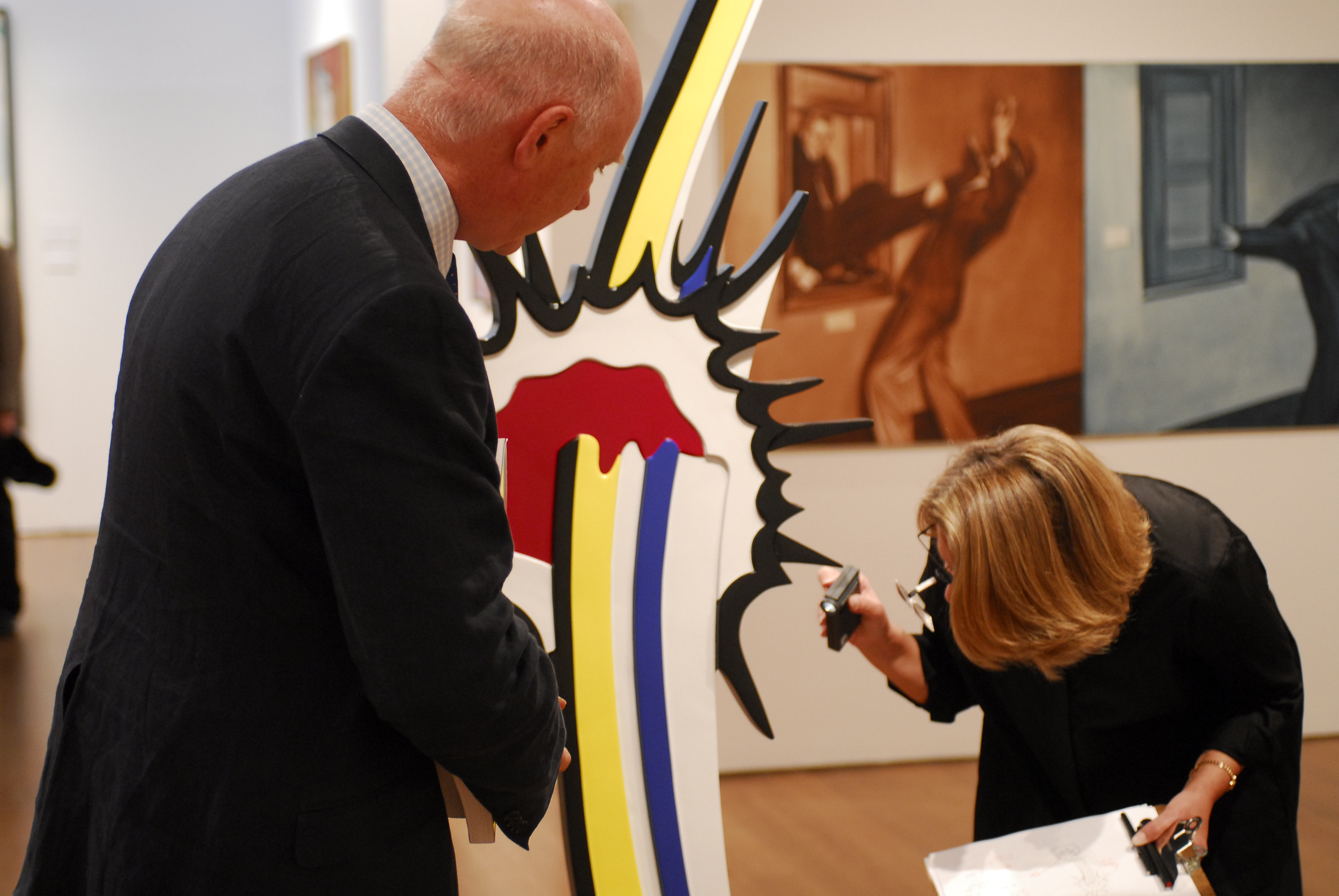
Courtesy of Fine Art Brokers
Confirm authenticity
When it comes to confirming a work’s authenticity, there is no ‘one size fits all’ approach. ‘If you’re buying a contemporary artwork from a dealer online, make sure you get a comprehensive invoice that includes artwork title, dimensions, date, and edition number if it’s a print,’ advises Waterhouse. ‘For secondary market works, you’ll likely need a Certificate of Authenticity from the expert or recognised authenticating body.’
If you’re unsure of the artwork’s provenance or attribution, start by finding out whether the artist has a published Catalogue Raisonné, a scholarly compilation of the artist’s body of work. Andy Warhol, Jackson Pollock, Jean Dubuffet and Roy Lichtenstein, for instance, are among the celebrated 20th century artists that do. If not, see if they have an authentication committee. Sending works off for authentication, however, can be a risky business. ‘The Marc Chagall committee will destroy any artwork sent to them for authentication that they do not deem an original,’ notes Waterhouse.
There are, of course, situations where none of the above applies and where old fashion detective work comes into its own. This may include looking through the artist’s archives, old press cuttings or even historic sale catalogues. ‘You’re looking for a paper trail,’ says Waterhouse. ‘If you’re unable to find anything on the artwork’s prior whereabouts, you may look to enlist the help of an advisor who can assess whether the work in question is indeed what it purports to be.’
Assess the price
When you’re buying art from a gallery or a dealer online, it’s common to negotiate the price. ‘But before asking for a discount,’ advises Waterhouse, ‘it’s best to check if the price being asked is not way above what is both reasonable and what you’d be prepared to pay.’
To help you determine value, look to previously sold comparable works by the artist. Use Artnet’s Price Database tool, for instance, to look up auction results dating back to 1985. Alternatively, see if a competitor gallery is exhibiting or selling similar artwork by the same artist. But remember, condition, date and the significance of the work in the artist’s wider oeuvre can all influence price, as can recent artist activity such as museum exhibitions. ‘One high price for an artist does not make all works more valuable,’ notes Waterhouse. ‘Equally, a poor auction price doesn’t necessarily affect all works – there are many factors to consider and ask an expert if you’re in any doubt.’
Know your space
When buying art online, it’s important to take practical considerations into account such as the size of your space, the size of the artwork and the type of artworks hanging nearby. ‘Even after many years as an art advisor, I am often surprised by the fact that a painting is much smaller or bigger than I had imagined,’ says Waterhouse.
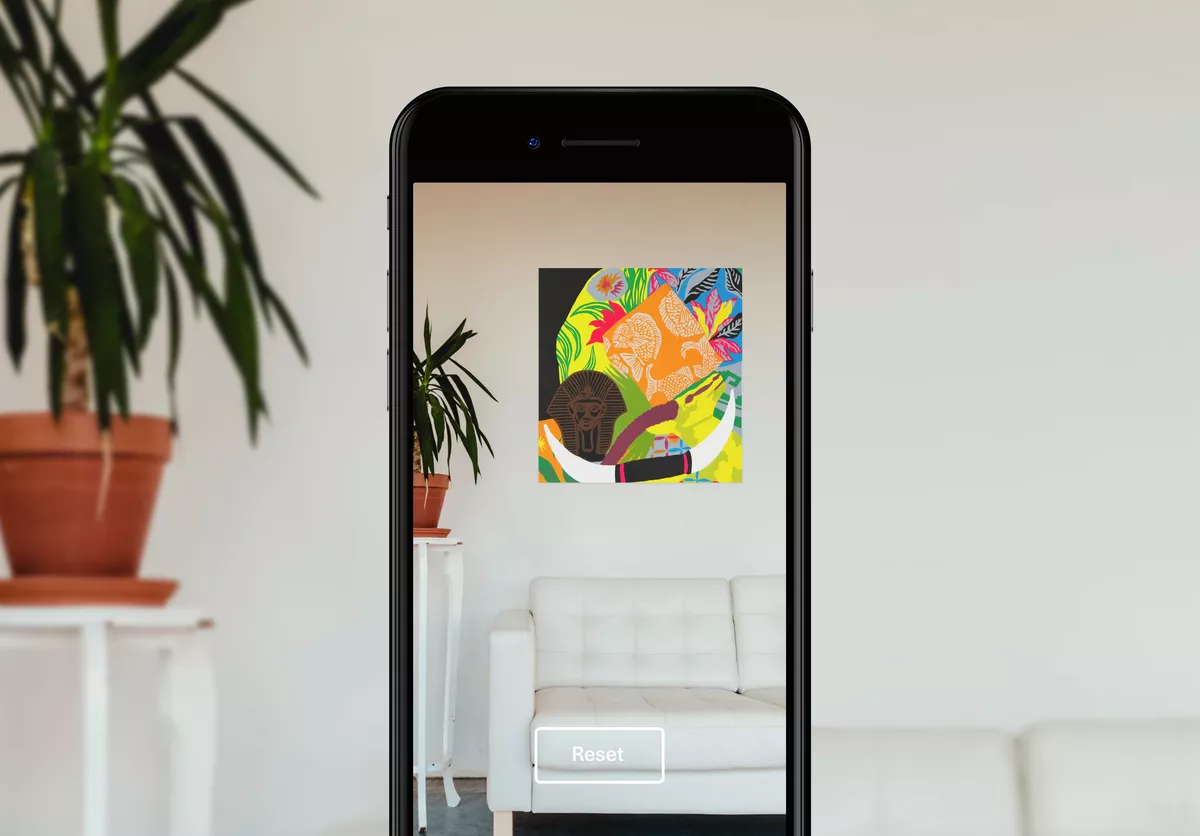
Using Artsy’s augmented reality feature to place an artwork on a wall. Courtesy of Artsy.
Use a measuring tape or a cardboard cut-out with the same dimensions as your prospective artwork and hold it up against the wall. This process will also help you ascertain if you need specialised lighting, for example, and how you’ll transport the work from A to B. Large canvases might need craning into top floor apartments if lifts or staircases are too narrow. ‘I’ve been involved in a few precautionary measures,’ recalls Waterhouse. ‘The most complicated was checking if a client’s floor could withstand the weight of an 8-ft-tall (240 cm) Rodin sculpture, and then getting it up to the 42nd floor of his New York apartment block.’
Alternatively, look to online tools such as Artsy’s AR app, which lets you virtually hang your art on your walls.
Buy what you love
‘Buying art should be done carefully but it should also be enjoyable,’ says Waterhouse. ‘Look for challenging subjects in a style that was relevant to the period it was painted or works that speak to you as a collector or to your collection.’ Above all, take your time filling the space in your home. ‘You should never feel pressurised or rushed into making a decision,’ adds Waterhouse. ‘Buy what you love and feel an emotional connection to, as hopefully it’s something that you’ll live with for many years to come.’


